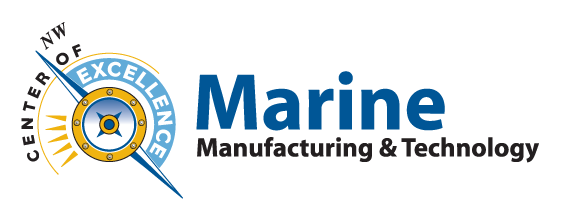A Hawsepiper's Journey: The Overlooked Mariner
By Jenny Johnson, Maritime Inclusion Partners
When I became a mariner in 1998 it required very little of me. I needed sea days, I took a few tests and paid some fees, and puff I was a credentialed mariner!
Upgrading was the same, more sea days, testing, fees, and done!
It cost me roughly $300 to kick-start my maritime career. Today it would cost me roughly $3,000 to achieve the same level of credential. Over the course of the last 20 years, the process of climbing the ranks as a professional mariner has become burdensome, confusing, and expensive.
I did not come from a maritime family, nor did I come from a family that went to college. We were a working-class blue-collar family from Vancouver Washington. I had never heard of a maritime college or academy, but I was lucky enough to join Sea Exploring (Sea Scouts) when I was 14 years old.
I had just started a new school in the 9th grade. I hadn’t made any friends yet so when someone walked up to me and invited me to join them at Sea Scouts for the weekend, I jumped on it. I had no idea what Sea Scouts was or what I would be doing all weekend, but I was making friends and that was all that mattered.
After a full two days of bailing bilges, repairing docks, scrubbing heads, sleeping on a hard deck and getting yelled at by cranky officers I was HOOKED!!! This program changed my life forever.
But even after spending all of my spare time at the Sea Scout base from the ages of 14 to 19, I was still completely unaware that a career in maritime was even possible. My only exposure was joining the military, so I set my sights on being a diesel mechanic in the United States Coast Guard. I even took diesel technology classes at the local Skills Center in proportion.
My dreams of being a Coastie were soon shattered after being medically disqualified from service during the enlistment process. Not having any backup plan left me without a rudder. I drifted along for about a year or so and eventually found myself unemployed and without permanent housing.
I picked up the want ads and found a posting for a housekeeper on a small passenger cruise boat with a schedule of 6 weeks on and 2 weeks off. After a quick interview, the HR manager felt I would be better suited for the deck department and 4 weeks later I was reporting to my first boat as a deckhand. I had to share a room and head with seven male deckhands, and I didn’t even blink an eye. I was there to work just like anyone else and if this is where the deckhands sleep then this is where I sleep.
There would still be several hitches before I would learn about becoming a credentialed mariner. Even though I was there living it I still had not realized that this was a career that people needed licenses for and worked hard to progress and move up the ranks. Then one day the second mate asked me “When do you plan on getting your ticket?”. To which I replied “What????”. He then went on to explain that I could be a river captain if I got my mariner credentials.
Once I reached my 360 sea days, I hit the books and had my “ticket” at the age of 21. It was a small, limited tonnage license but it was a huge deal to me and to my family, and it was in fact enough for me to work as a river captain!
Eventually, my adventurous spirit wanted more and over the course of several years, I worked on a high-speed catamaran, a private yacht, a research vessel, an ammo supply ship, and a tanker. Spanning Alaska to the Middle East.
My time as a Sea Scout led the way for me to be a professional mariner and then the maritime professional I am today. As you can see from my story, I did not attend a maritime school or any schooling post-high school. However, I was still able to enter the maritime industry and go to sea without much in my way regarding cost and time.
Given the expense and barriers that are in place today, stories like mine are few and far between. Hawespipers bring a diversity of thought and foundational seamanship skills that are critical to a strong and healthy workforce. As an industry, we have two choices, we can work to scale back on the requirements for someone to become a mariner or we can start providing financial support at a larger scale for anyone who wants a career at sea.
Today most scholarship opportunities are focused on college-bound students and student loans do not cover most STCW training. Where does that leave us as an industry? Right where we are today, at a critical labor shortage. We have been on this very steep decline for the last 8 years. And while there are many organizations working hard to reverse the situation their focus has been mainly on licensed officers and maritime academies. I believe if the industry shifted some of that focus to youth programs like Sea Scouts we could create an incredible pipeline of rated mariners who have strong seamanship and leadership skills and truly create a sustainable maritime workforce.

